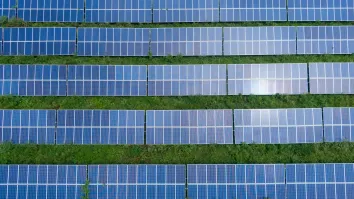Policy gaps challenge Indonesia’s $146B investment goal for renewable energy
$146 billion worth of investments from the private sector is needed.
To meet its 2030 renewable energy target, Indonesia requires an investment of $146 billion from the private sector. With its abundant solar and hydro resources, Indonesia is positioned to harness its full renewable energy potential. However, several policy and regulatory challenges must be addressed to attract the necessary investments and drive progress.
Dinita Setyawati, Ember's Senior Electricity Policy Analyst for Southeast Asia, highlights the importance of incentivising project developers and potential solar adopters. "Indonesia can fully utilise its renewable energy sector by incentivizing project developers and potential solar adopters," she said. .
Despite Indonesia's renewable energy capacity plans, the country needs approximately $285 billion to meet its 2030 climate commitments, with private investments expected to fill the $146 billion gap. However, renewable energy investment in Indonesia has stagnated, with only $1.5 billion attracted in 2023.
Mutya Yustika, an Energy Finance Specialist at IEEFA, noted that several policy gaps need to be addressed to attract investors. "The government has to collaborate with the private sector, especially in project funding," she emphasised.
Addressing policy gaps
Several factors hinder the growth of renewable energy investments in Indonesia. According to Yustika, inconsistencies and lack of transparency in regulations, as well as high investment costs due to local content requirements, discourage potential investors.
"There are still issues faced from this regulation, such as inconsistency between regulations and lack of transparency in implementation," she noted. Additionally, unfavourable pay schemes and restrictive ownership transfer policies pose challenges for investors.
Setyawati agrees that addressing policy gaps is crucial for investment growth. "The government can address gaps in investing by addressing three points: the quality of state budget funding, grid constraints, and local approaches," she suggested.
She added that by enhancing state budget allocations, improving grid capacity for renewable energy integration, and adopting localised strategies, Indonesia can create a more favourable investment climate.
Future outlook and strategic focus
The government's supply plan aims to install around 20 gigawatts of renewable energy capacity, focusing on hydropower, geothermal, and solar. However, Indonesia needs to accelerate its solar energy deployment to meet its 2.3-gigawatt target this year.
"Rather than focusing on complex, long-term, large-scale renewable energy projects such as hydropower or geothermal, Indonesia should focus more on building renewable energy technologies such as solar or wind," Setyawati advised.
Despite efforts, the current share of renewable energy in Indonesia's electricity mix is only 13.1%, below the 2023 target of 17.9%. The government's proposal to revise national energy policy and lower the 2030 renewable energy target from 26% to between 19% and 21% highlights the need for continued support and regulatory adjustments.
"It is difficult to confidently say that Indonesia will achieve its 2030 renewable energy mix target," Yustika remarked.



















 Advertise
Advertise






